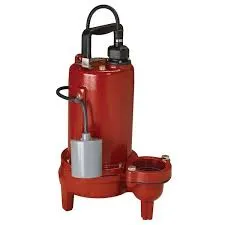English
- Afrikaans
- Albanian
- Amharic
- Arabic
- Armenian
- Azerbaijani
- Basque
- Belarusian
- Bengali
- Bosnian
- Bulgarian
- Catalan
- Cebuano
- Corsican
- Croatian
- Czech
- Danish
- Dutch
- English
- Esperanto
- Estonian
- Finnish
- French
- Frisian
- Galician
- Georgian
- German
- Greek
- Gujarati
- Haitian Creole
- hausa
- hawaiian
- Hebrew
- Hindi
- Miao
- Hungarian
- Icelandic
- igbo
- Indonesian
- irish
- Italian
- Japanese
- Javanese
- Kannada
- kazakh
- Khmer
- Rwandese
- Korean
- Kurdish
- Kyrgyz
- Lao
- Latin
- Latvian
- Lithuanian
- Luxembourgish
- Macedonian
- Malgashi
- Malay
- Malayalam
- Maltese
- Maori
- Marathi
- Mongolian
- Myanmar
- Nepali
- Norwegian
- Norwegian
- Occitan
- Pashto
- Persian
- Polish
- Portuguese
- Punjabi
- Romanian
- Russian
- Samoan
- Scottish Gaelic
- Serbian
- Sesotho
- Shona
- Sindhi
- Sinhala
- Slovak
- Slovenian
- Somali
- Spanish
- Sundanese
- Swahili
- Swedish
- Tagalog
- Tajik
- Tamil
- Tatar
- Telugu
- Thai
- Turkish
- Turkmen
- Ukrainian
- Urdu
- Uighur
- Uzbek
- Vietnamese
- Welsh
- Bantu
- Yiddish
- Yoruba
- Zulu
Telephone: +86 13120555503
Email: frank@cypump.com
Dec . 16, 2024 23:40 Back to list
sump pump for sewage
Understanding Sump Pumps for Sewage A Vital Component for Effective Waste Management
In modern plumbing systems, effective waste management is crucial not only for sanitation but also for ensuring the integrity of our homes and infrastructure. One key component in this system is the sump pump, particularly when it comes to managing sewage. This article explores what sump pumps are, their importance, and the factors to consider when choosing the right pump for sewage applications.
What is a Sump Pump?
A sump pump is a device installed in the lowest part of a basement or crawl space to remove accumulated water. These pumps are typically housed in a sump basin, which collects excess water, preventing flooding and water damage. While standard sump pumps are designed to handle clear water from rain or groundwater, sewage sump pumps, also known as sewage pumps, are specifically engineered to handle waste and sewage.
Importance of Sewage Sump Pumps
Sewage sump pumps play a vital role in managing wastewater in various settings
. Here are a few reasons why they are indispensable1. Prevent Flooding In areas prone to flooding or water accumulation, sewage sump pumps help divert water away from critical areas, preventing structural damage and health hazards associated with stagnant water.
2. Keep Sewage Systems Functional In homes with lower sewer lines, a sewage sump pump is necessary to prevent sewage backup. This device moves waste to a higher elevation where it can be effectively drained or treated, maintaining the plumbing system's functionality.
3. Enhance Hygiene By efficiently pumping sewage away, these pumps minimize the risk of contamination and odors, ensuring a healthier living environment.
4. Increase Property Value A home equipped with a reliable sewage pumping system is often more attractive to potential buyers, as they recognize the value of a good waste management system in preventing costly damage.
How Sewage Sump Pumps Work
sump pump for sewage

Sewage sump pumps are designed to handle solid waste materials and sewage. They typically feature a robust motor and impeller capable of moving roughly 2-inch solids, making them suitable for residential and commercial applications. When the water level in the sump basin rises to a preset level, the pump is activated, drawing the sewage and waste upward and out through discharge pipes, often leading to the main sewer line or a septic system.
Key Features to Consider
When selecting a sewage sump pump, several factors should be taken into account
1. Power and Capacity Ensure the pump has adequate horsepower for the volume of sewage it needs to handle. Larger homes or commercial properties may require pumps with higher capacity.
2. Switch Type Pumps can use different types of switches, such as tethered floats, vertical floats, or diaphragm switches. Each has its own operational characteristics and choosing the right one depends on the specific layout and requirements of your sewage system.
3. Material and Durability Look for pumps made of corrosion-resistant materials, as they will be exposed to potentially harsh sewage substances. High-quality materials ensure longevity and reliability.
4. Noise Level Some pumps can be quite noisy during operation. If noise is a concern, consider models specifically designed to operate quietly.
5. Installation and Maintenance Some pumps are easier to install and maintain than others. For homeowners, a user-friendly option may be preferable to reduce the need for professional assistance.
Conclusion
In conclusion, sewage sump pumps are an essential component of modern waste management systems, preventing flooding, ensuring hygiene, and protecting property integrity. Understanding their function and making an informed choice based on your needs can lead to effective sewage management and protect your home from potential disasters. Proper installation and maintenance will maximize the effectiveness and lifespan of these crucial devices, making your living environment safer and more comfortable.
-
ISG Series Vertical Pipeline Pump - Chi Yuan Pumps Co., LTD.
NewsJul.30,2025
-
ISG Series Vertical Pipeline Pump - Chi Yuan Pumps Co., LTD.|energy-efficient fluid handling&industrial durability
NewsJul.30,2025
-
ISG Series Vertical Pipeline Pump - Chi Yuan Pumps | Advanced Engineering&Industrial Efficiency
NewsJul.30,2025
-
ISG Series Pipeline Pump - Chi Yuan Pumps | High Efficiency, Energy Saving
NewsJul.30,2025
-
ISG Series Vertical Pipeline Pump-Chi Yuan Pumps|High Efficiency&Reliable Performance
NewsJul.29,2025
-
ISG Series Vertical Pipeline Pump|High Efficiency&Low Noise
NewsJul.29,2025










